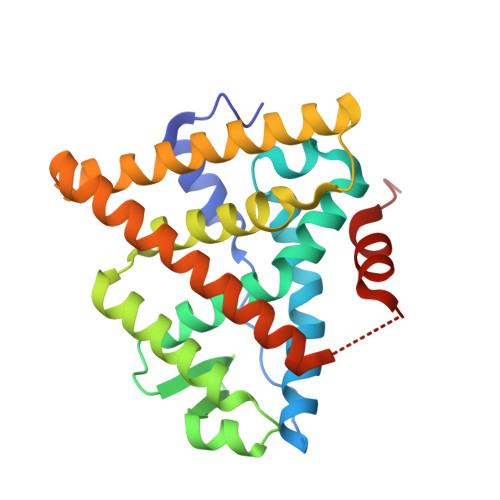Prediction of the tissue-specificity of selective estrogen receptor modulators by using a single biochemical method.
Dai, S.Y., Chalmers, M.J., Bruning, J., Bramlett, K.S., Osborne, H.E., Montrose-Rafizadeh, C., Barr, R.J., Wang, Y., Wang, M., Burris, T.P., Dodge, J.A., Griffin, P.R.(2008) Proc Natl Acad Sci U S A 105: 7171-7176
- PubMed: 18474858
- DOI: https://doi.org/10.1073/pnas.0710802105
- Primary Citation of Related Structures:
2R6W, 2R6Y - PubMed Abstract:
Here, we demonstrate that a single biochemical assay is able to predict the tissue-selective pharmacology of an array of selective estrogen receptor modulators (SERMs). We describe an approach to classify estrogen receptor (ER) modulators based on dynamics of the receptor-ligand complex as probed with hydrogen/deuterium exchange (HDX) mass spectrometry. Differential HDX mapping coupled with cluster and discriminate analysis effectively predicted tissue-selective function in most, but not all, cases tested. We demonstrate that analysis of dynamics of the receptor-ligand complex facilitates binning of ER modulators into distinct groups based on structural dynamics. Importantly, we were able to differentiate small structural changes within ER ligands of the same chemotype. In addition, HDX revealed differentially stabilized regions within the ligand-binding pocket that may contribute to the different pharmacology phenotypes of the compounds independent of helix 12 positioning. In summary, HDX provides a sensitive and rapid approach to classify modulators of the estrogen receptor that correlates with their pharmacological profile.
Organizational Affiliation:
Department of Molecular Therapeutics, The Scripps Research Institute, Jupiter, FL 33458, USA.















